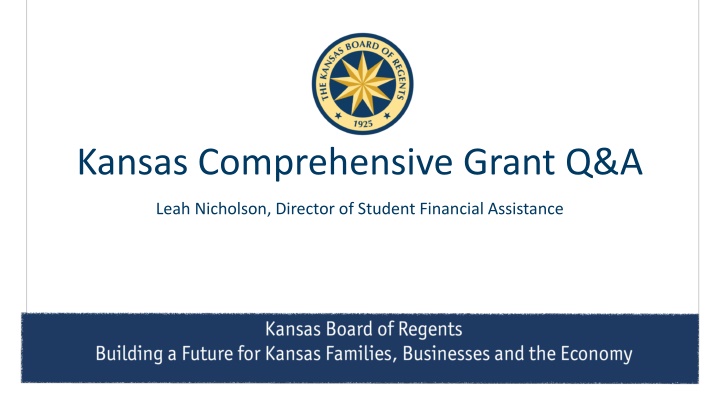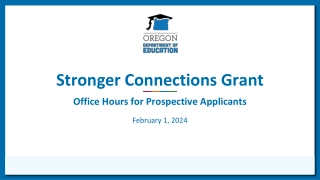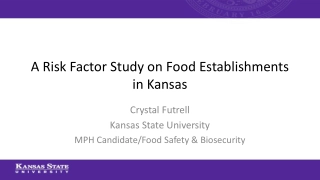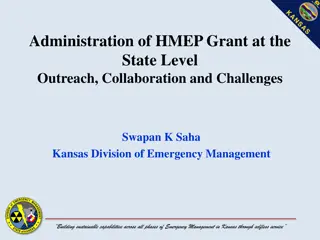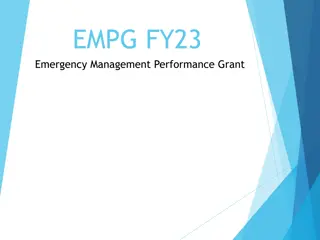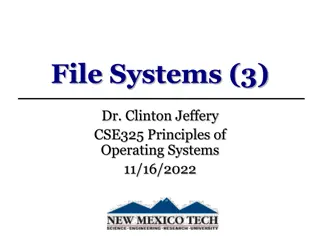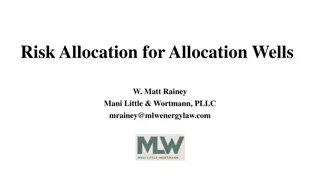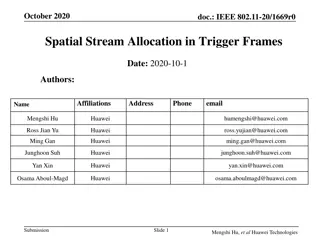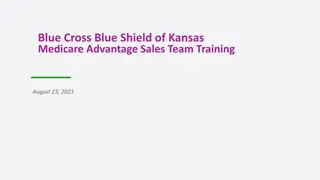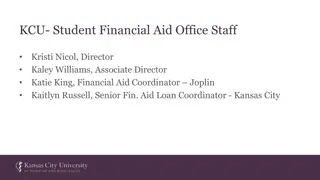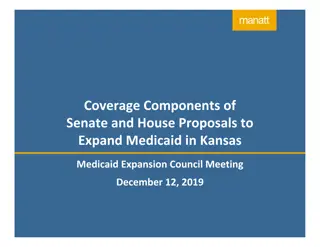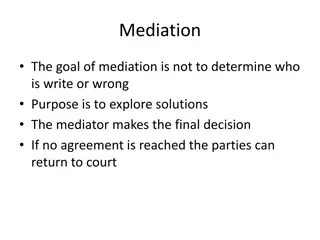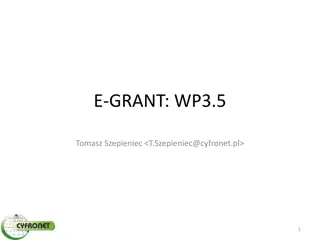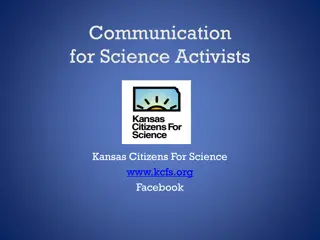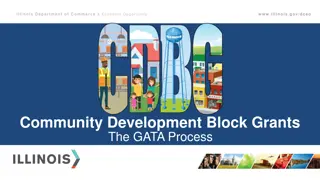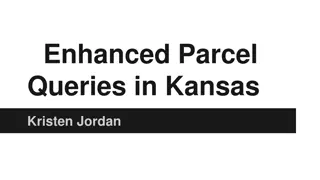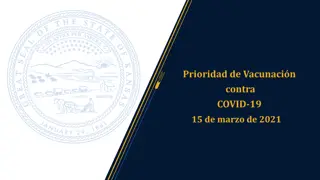Kansas Comprehensive Grant Allocation
This resource provides detailed information on the allocation components of the Kansas Comprehensive Grant, including legal base amount, enhancement funding, state match funding, and institutional match rules. It also discusses the criteria and rules institutions must follow when awarding funds based on financial need.
Download Presentation

Please find below an Image/Link to download the presentation.
The content on the website is provided AS IS for your information and personal use only. It may not be sold, licensed, or shared on other websites without obtaining consent from the author.If you encounter any issues during the download, it is possible that the publisher has removed the file from their server.
You are allowed to download the files provided on this website for personal or commercial use, subject to the condition that they are used lawfully. All files are the property of their respective owners.
The content on the website is provided AS IS for your information and personal use only. It may not be sold, licensed, or shared on other websites without obtaining consent from the author.
E N D
Presentation Transcript
Kansas Comprehensive Grant Q&A Leah Nicholson, Director of Student Financial Assistance
What makes up my allocation? What makes up my allocation? Legal Base Amount: This portion of your allocation is written in statute and was established in 1998-99. It cannot be adjusted by anything other than a change in statute. Must follow KCG criteria when awarding. Enhancement Funding: This portion of your allocation is determined by an agreed upon formula within your sectors that is based on the data your institution provides each Fall. Public institutions use a formula that weights students with the highest financial need. Independent institutions use a formula that distributes funding to create an equal percentage of funded/unfunded applications at each institution based on the maximum award amount. Must follow KCG criteria when awarding. State Match Funding: This portion of your allocation was the new funding given in fiscal year 2023. It was distributed among institutions based on your institution s Pell eligible student count (both in-state and out-of-state) compared to the overall Pell count among eligible institutions in the state. This funding requires institutions to match their allocated amount $1 for $1. Must follow KCG criteria when awarding. Institutional Match. The non-state money that the institution must raise/identify to match the state match funding. Only criteria is student must have financial need as defined by the institution.
Institutional Funds Rules to Follow: Institutional Funds Rules to Follow: 1. The amount an individual institution will match $1:$1 would be equal to the amount of state match dollars an individual institution is allocated each year. Moving forward, this may be the ENTIRE appropriation more to come on this later. 2. Institutions will award institutional match amounts to students they deem eligible (who may or may not be eligible for KCG funding), as long as the institutional match is awarded to students who demonstrate financial need. Financial need is determined by the school. 3. Institutions can use both new and current institutional funds to count towards their institutional match, including institutional scholarships, institutional grants, and earnings on endowed funds. All institutional match funds should be a cash match meaning actual dollars must be present in the transaction behind the award.
Lets talk about financial need Let s talk about financial need Examples I ve received from other schools on how one might be defining financial need are: Typical federal methodology for financial need (COA EFC) Using a combination of indicators such as income and family size Targeted aid that addresses gaps between a student s aid and what they will owe rather than only the gap between EFC and COA Emergency grants Bridge grants (past due balance awards) Completion grants (exhausted aid awards) Come back and finish /stopped out student awards
State Fund Rules to Follow: State Fund Rules to Follow: 1. State match funding (and base and enhancement fudning) must be awarded with the same eligibility criteria and awarding rules as regular KCG funds. Kansas Resident Be an undergraduate, degree-seeking student pursuing first degree Enrolled full-time at an eligible institution (12 credit hours) Demonstrate financial need using the federal aid methodology Meet Satisfactory Academic Progress (SAP) Can be eligible for up to 8 semesters (10 if enrolled in a designated 5-year program) Priority is given to eligible applicants that file the FAFSA by April 1 Institutions may determine their own priority dates for KCG. Public institutions may only award students with up to a 6500 EFC. (This is being discussed by directors in May). 2. State match funding should not be awarded until it is matched. 3. If an institution is not able to match their full required amount in any given year, any unmatched state funding at an institution would be returned and redistributed the next academic year to all institutions based on the distribution formula for state match funding. 4. If state match funding has been matched by the institution but has not been spent, institutions will be able to keep their unspent state match allocation and roll it over to award for the next academic year.
What counts as a match? What counts as a match? Endowments created for student financial aid awards: o Endowed accounts can have yearly earnings count towards the total institutional match funding amount each year. This is the portion that can actually be spent towards student financial aid awards. o The corpus/investments made to an endowment will not count towards the match requirement, as this portion cannot be spent on student financial aid awards. However, new investments made into currently existing endowments, or new endowments created will eventually result in earnings that will count towards the match requirement each year. o Awards made from the institutional match must be made to students with financial need. Financial need is determined by the school.
What counts as a match? What counts as a match? Donations/gifts raised towards student financial aid awards: o Awards made within the academic year being reported from donations/gifts can count towards institutional match. o Awards made from the institutional match must be made to students with financial need. Financial need is determined by the school.
What DOES NOT count as a match? What DOES NOT count as a match? Institutions cannot use the following as an institutional match: o Non-institutional scholarships/grants o State awards (state scholarships, KCG, etc.) o Federal financial aid (such as Pell grant, SEOG, Work Study, TEACH, etc.) o Non-cash matches (Example: waivers or tuition discounts that do not result in the exchange of funds necessary to finance the costs of student attendance) o Loans
What if we dont match? What if we don t match? 1. If an institution is not able to match their full required amount in any given year, any unmatched state funding at an institution would be returned and redistributed the next academic year to all institutions based on the distribution formula for state match funding. This would ensure that the full state match funding is eventually matched and spent among the institutions. 2. If state match funding has been matched by the institution but has not been spent, institutions will be able to keep their unspent state match allocation and roll it over to award for the next academic year.
Reporting Your Match Reporting Your Match Institutions will be required to report to the Board of Regents how they matched their KCG allocations by July 31steach year. For example, institutions will report match identified during the 2022-2023 academic year on July 31, 2023. Institutions will need to provide the following information in that report: The source of the funds (earnings from an endowed fund, one-time donation, etc.); and The aggregate amount used from each fund towards the match; and The aggregate number of students who were awarded from each match fund; and Attest that institutional match funds were awarded to students with financial need. The first match report will be due July 31st, 2023.
Report Changes on the Horizon Report Changes on the Horizon Summer (Match) Report: We will send a draft of the match report when we send allocations for 2024. Review to ensure that questions can be answered, and provide feedback. Actual report will be requested in late June; due July 31, 2023. Fall Report: Some questions may change/be added to better understand how and who you are awarding, such as: Award amounts/ranges/max award Average award Total spent; total rolled over to next year Are there other data points that you would find of interest?
Current Proviso Language (FY 2024 and 2025) Current Proviso Language (FY 2024 and 2025) all of such expenditures from such account shall require a match of local nonstate or private moneys on a $1-for-$1 basis: Provided, however, That all expenditures from such account shall be made to provide that all moneys shall be distributed in the same proportionate amount as such moneys were distributed in fiscal year 2022. What does this mean? All schools who participate in the KCG program will have to match their entire appropriation with institutional funds. Regents and Washburn would experience an unexpected $5.2M shortfall of funding in FY 2024 when comparing to what they received in fiscal year 2023
Current Proviso Language (FY 2024 and 2025) Current Proviso Language (FY 2024 and 2025) Legal Base Amount For 2023-2024, it is possible that institutions will have to match all of these amounts, not just the state match portion. Enhancement Funding We will have to determine how this effects the allocation formula; namely, if we will still use Pell count to determine a part of your allocation. State Match Funding
Questions? lnicholson@ksbor.org 785-430-5464
